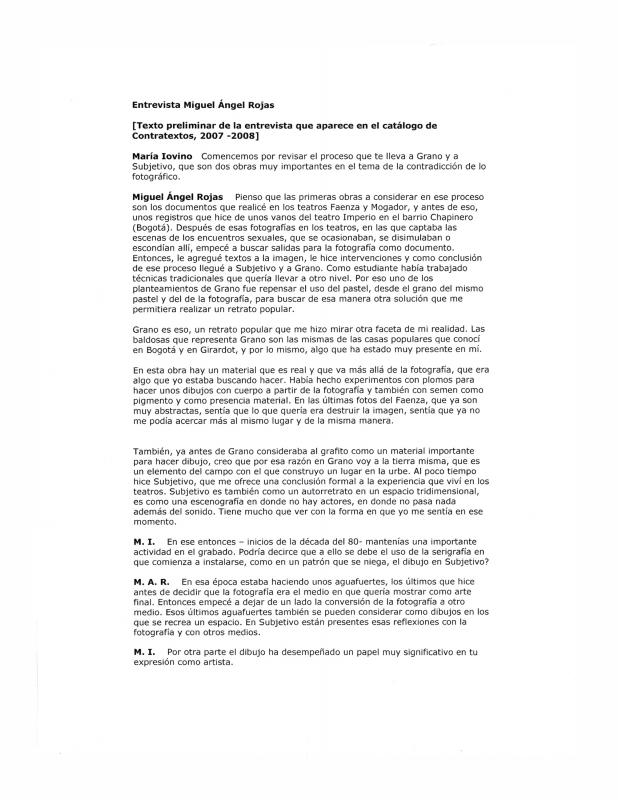María Iovino (born 1962) asserts that if we “pause” before contemporary art and observe it carefully, our understanding of it will be furthered. This passive yet fundamental approach makes itself felt in this conversation with José Alejandro Restrepo, an exchange that casts new light on the concepts and formal aspects at stake in Restrepo’s work.
Particularly interesting in the interview is the way Iovino and Restrepo converse about the demystification of the multiple and immediate audiovisual image. The discussion touches on not only the presence of that image in formulations that have appeared throughout Restrepo’s oeuvre, but also on the role that the imaginary of the local as well as the information that comes from the mass media has played in his work. The ideas that Restrepo puts forth here evidence his interest in projects that involve slow processes, in focusing on questions unseen as the basis on which to build non-linear (audiovisual and textual) discourses.
Theexhibition Contratextos (2007–2008) included four Colombian artists: Fernell Franco (1946−2006), Óscar Muñoz (born 1951), José Alejandro Restrepo (born 1959), and Miguel Ángel Rojas (born 1946), all of whom—if from different perspectives and by means of different expressive media (photography, video, and installation)—address the question of representation. These artists use those media to question the concept of reality and the idea of a single discourse (of the image as well as the text). At the core of these artists’ pursuits and research lies an off-centeredness that makes way for other forms of observation. This text is connected to the following documents: “Entrevista a Miguel Ángel Rojas” by María Iovino, which also addresses the Contratextos exhibition [doc. no. 860526]; and “Cruces: arte, artista: José Alejandro Restrepo,” [doc. no. 1091801].
Iovino’s vision, which vindicates the well-established position of these four artists on the Colombian, as well as the international, art scene, sheds light on the intersections that arise when different parties observe the same questions: how Rojas and Restrepo each interpret landscape, for instance, or the procedures by which Muñoz and Franco appropriate the urban or the contextual to reformulate it by means of analysis and consideration of the pre-photographic, that is, what ensues before the image takes shape.
Only two of the interviews that took place for the Contratextos exhibition (the one with Restrepo and with Rojas)have been included in these archives. This is due to the fact that a number of other documents on the work of Fernell Franco and Óscar Muñoz have been studied: on Franco, the writing of his work later featured in the catalogue Otro Documento (2004), which contains all the conversations between that artist and Iovino; and on Muñoz, a series of writings—many of them interviews—that rigorously attest to his work.


